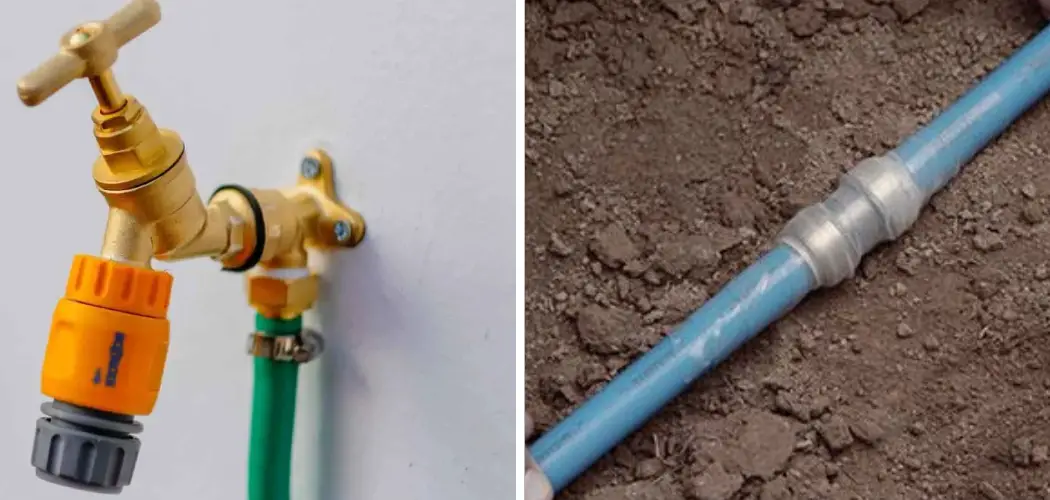Polyethylene cross-linked (PEX) tubing has revolutionized the world of plumbing, offering a flexible and cost-effective alternative to traditional copper or PVC pipes. PEX is known for its durability and resistance to corrosion, making it an ideal choice for both indoor and outdoor plumbing applications.
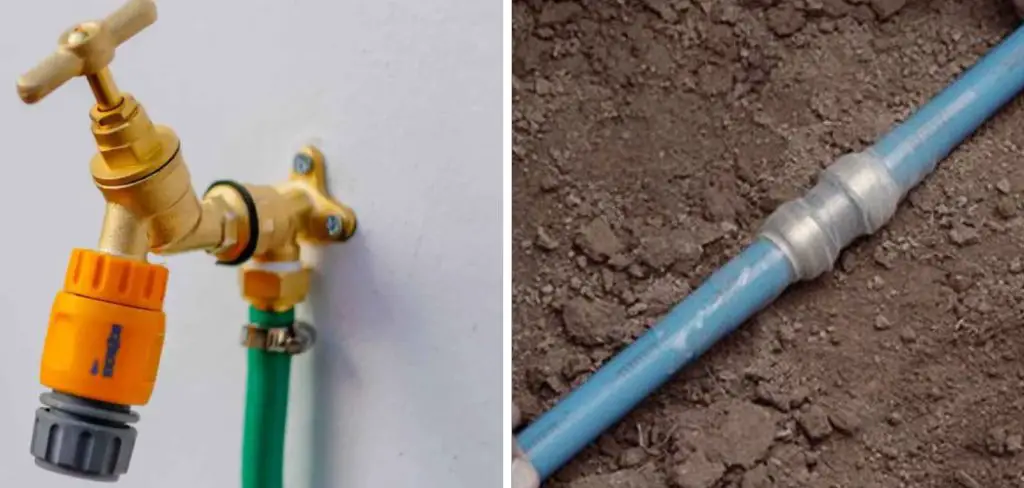
However, when it comes to using PEX outside, a few specific considerations are essential to safeguard your plumbing system against the challenges posed by external elements. In this comprehensive guide, we will explore how to protect pex outside.
Whether you’re planning to run PEX lines for irrigation, outdoor showers, or other outdoor plumbing needs, understanding how to shield your PEX tubing from sunlight, temperature fluctuations, and physical damage is crucial to ensure its longevity and reliability. From UV-resistant coatings to proper insulation techniques, we will delve into the strategies that will help you maintain a robust and efficient outdoor PEX plumbing system.
Challenges of Exposing Pex to Outdoor Conditions
Exposing Pex, or cross-linked polyethylene, to outdoor conditions can pose significant challenges for homeowners and construction professionals alike. While this versatile plastic tubing is commonly used for indoor plumbing and heating systems, its performance can be compromised when exposed to extreme temperatures, UV rays, and other elements found in an outdoor environment.
One of the main challenges of protecting Pex outside is preventing damage from freezing temperatures. Unlike metal pipes that expand under frozen conditions without breaking, Pex is susceptible to cracking when water freezes inside it. This is especially problematic in areas with harsh winters where outdoor plumbing systems need to be properly insulated and drained before the cold sets in.
Another challenge of exposing Pex outdoors is its vulnerability to UV radiation. When exposed to sunlight for prolonged periods, Pex can become brittle and weakened. This is due to the breakdown of antioxidants in the material, which help prevent degradation from UV rays. As a result, it is important to properly protect Pex tubing with insulation or by burying it underground.
In addition to temperature and UV exposure, Pex can also be affected by other elements found outdoors such as chemicals and soil conditions. Harsh chemicals like fertilizers and pesticides can corrode the tubing, while acidic or alkaline soils can cause deterioration over time. Properly selecting the right type of Pex for outdoor use and ensuring its compatibility with surrounding materials is crucial for its longevity.
10 Methods How to Protect Pex outside
1. Install a Cover
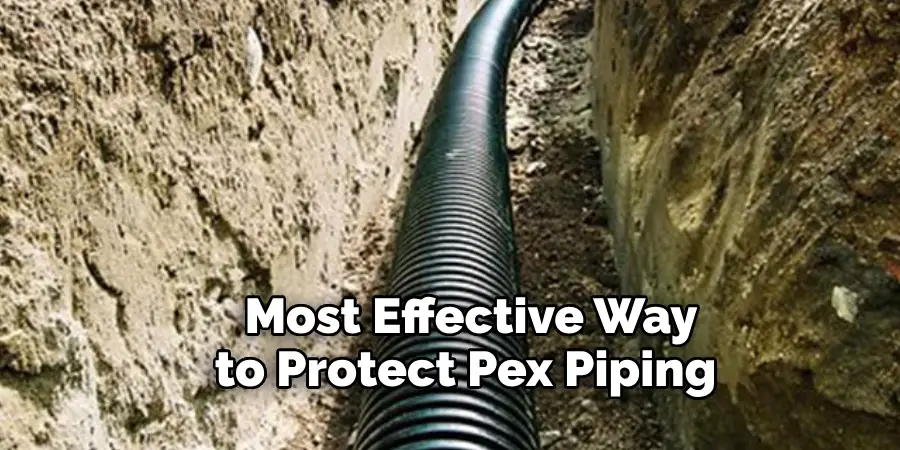
The most effective way to protect PEX piping from the elements is to install a cover over it. A cover can be made of any material that is waterproof and durable enough to withstand the elements, such as PVC or metal. Covers should be securely fastened in place so that they cannot be blown away by strong winds or knocked off by animals.
It is important to ensure that the cover is properly sized and fitted for the PEX piping it will be protecting. If the cover is too small, it may not provide adequate protection and if it is too large, it may become loose and slip off. Additionally, make sure there are no gaps or holes in the cover that could allow water or other debris to enter and damage the piping.
2. Use Heat Tape
Heat tape is an effective way to protect PEX piping from freezing temperatures. The tape is wrapped around the pipe and then plugged into an electrical outlet, which causes it to heat up and keep the water inside the pipe from freezing. It’s important to make sure that the heat tape is rated for outdoor use, as some types are only meant for indoor use. Additionally, it’s important to follow the manufacturer’s instructions for installation and usage to ensure proper functioning and safety.
3. Insulate with Foam
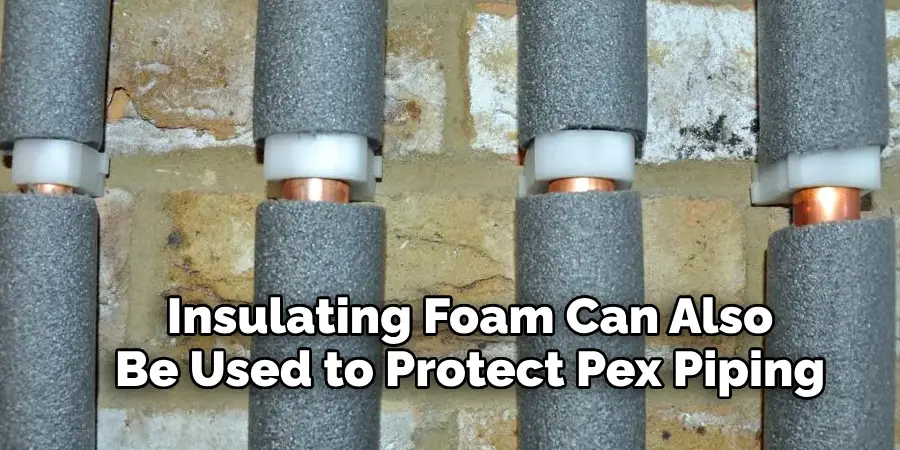
Insulating foam can also be used to protect PEX piping from freezing temperatures. The foam should be applied directly onto the pipe, making sure that there are no gaps between the foam and the pipe where cold air can get in. It’s important to make sure that the insulation is thick enough so that it will not compress over time due to pressure or weight on top of it.
To start, measure the diameter of the PEX pipe and then purchase foam insulation that is slightly larger in size. This will ensure a snug fit around the pipe and provide maximum protection against freezing temperatures.
4. Use a Heat Shield
A heat shield is another effective way of protecting PEX piping from freezing temperatures. Heat shields are typically made of aluminum or stainless steel and are designed to reflect heat back onto the pipe, keeping it warm even in cold weather conditions.
To install a heat shield, simply wrap it around the PEX piping and secure it in place with metal ties. It’s important to leave a small air gap between the heat shield and the pipe to allow for proper air circulation. Heat shields can also be used in conjunction with other insulation methods, such as foam tubing or electric heating cables, for added protection against freezing temperatures.
5. Install a Pipe Sleeve
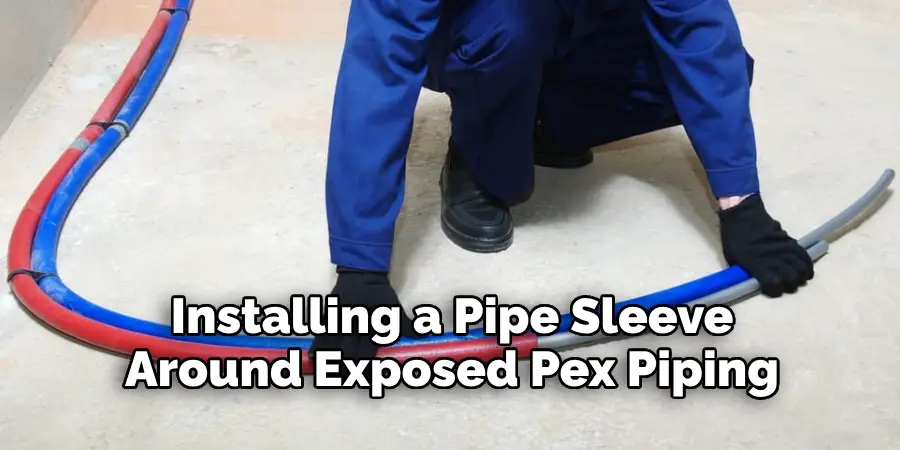
Installing a pipe sleeve around exposed PEX piping can help protect it from physical damage caused by animals or other objects coming into contact with it. Pipe sleeves come in various sizes and materials, such as PVC or metal, so you should choose one that best fits your needs and budget. However, there are a few key steps to follow when installing a pipe sleeve for PEX piping.
6. Use Corrugated Pipe Guard
A corrugated pipe guard is another option for protecting exposed PEX piping from physical damage caused by animals or other objects coming into contact with it. The guard consists of two layers: an inner layer made of flexible plastic tubing and an outer layer made of corrugated plastic sheeting, which helps provide additional protection against abrasion and impact forces on the pipes themselves.
The corrugated pipe guard is simple to install and can be cut to fit the length of the exposed PEX piping. Additionally, it is resistant to UV rays and can withstand extreme temperatures, making it a durable solution for protecting PEX outside.
7. Wrap with Burlap
Burlap can also be used as a protective covering for exposed PEX piping outdoors if you don’t want to use a more permanent solution, such as installing a cover or using insulation foam. The burlap should be wrapped tightly around the pipes, making sure there are no gaps where cold air could enter in between them. Additionally, if you’re using burlap, make sure it has been treated with insect repellent so that insects won’t chew through it.
Burlap is a durable and affordable material that can provide an extra layer of protection for your outdoor PEX pipes. It is made from natural fibers, usually jute or sisal, which are woven together to create a strong fabric. This fabric is then treated with chemicals to make it resistant to rot, mildew, and insects.
8. Install Snow Guards
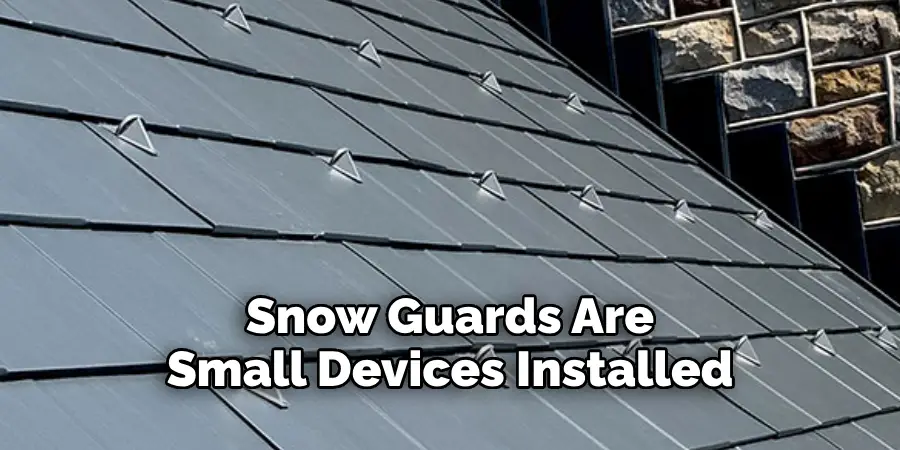
Snow guards are small devices installed on roofs that prevent snow from sliding off onto areas below them. Installing snow guards near areas where exposed PEX piping runs through can help prevent snow accumulation on top of them, thus helping protect them from potential damage caused by excess weight.
Snow guards can be installed in a variety of ways, depending on the type and design of your roof. Some snow guards require screws to be drilled into the roof, while others use an adhesive or clamp-on system. Make sure to carefully read and follow the instructions provided by the manufacturer when installing snow guards.
9. Keep Away Animals
Animals such as rodents, birds, squirrels, and other pests may try to chew through exposed PEX piping outdoors if given access to them. Therefore, keeping these animals away from your home’s exterior walls where your pipes run through will help reduce this risk significantly.
This can be done by trimming trees near your home’s exterior walls, sealing any holes leading into your walls, installing fences around gardens near these walls, etc. Make sure that animals cannot gain access to your walls and pipes.
In addition, make sure that any pets you own do not dig holes around the exterior of your home where PEX piping may be exposed. This can create a potential hazard for both your pets and your plumbing. Keep an eye out for any signs of animal activity near your pipes and take necessary precautions to protect them.
10. Monitor Temperature Changes
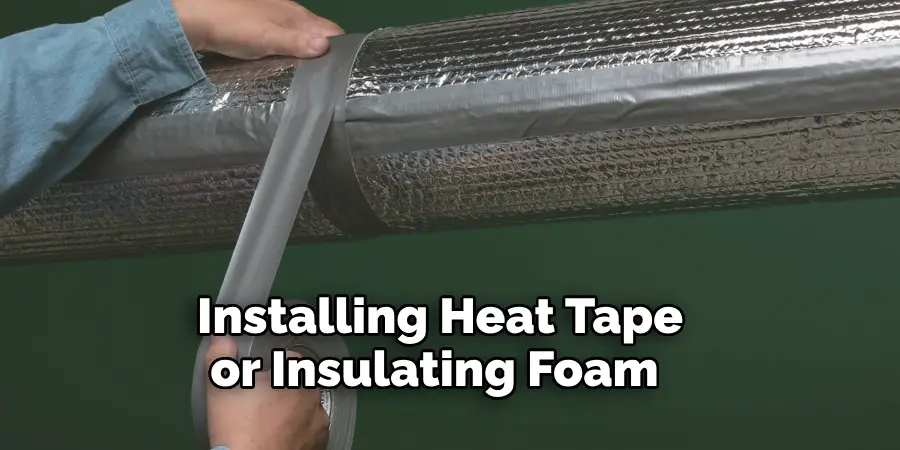
Finally, monitoring temperature changes outdoors near areas where exposed PEX piping runs through will help ensure that they do not freeze during winter months when temperatures drop below zero degrees Celsius ( 32°F ). If necessary, take steps such as installing heat tape or insulating foam around these pipes when needed in order to keep them above freezing temperatures at all times, even during the coldest of days.
Things to Consider When Protecting Pex Outside
Pex piping is a popular choice for plumbing and heating systems due to its durability, flexibility and ease of installation. However, when it comes to protecting Pex outside, there are some important factors that should be taken into consideration.
- UV Exposure – Pex pipes are sensitive to UV rays and can easily degrade if exposed for prolonged periods of time. This is why it is important to protect them from direct sunlight by either burying them underground or using protective covers.
- Temperature Changes – Extreme temperature fluctuations can cause the expansion and contraction of Pex pipes, leading to potential damages such as cracks or leaks. It is recommended to use insulation materials around outdoor Pex pipes to minimize the effects of temperature changes.
- Freeze-Thaw Cycles – Pex pipes are susceptible to damage from freeze-thaw cycles, especially in colder climates. To protect them, it is important to properly insulate and bury the pipes below the frost line.
- Mechanical Damage – While Pex piping is known for its flexibility, it is not indestructible. Sharp objects or heavy machinery can easily damage outdoor Pex pipes, so it’s important to be cautious when working around them and avoid any potential hazards.
Common Mistakes to Avoid When Protecting Pex Outside
If you are planning on protecting your pex tubing outside, there are a few common mistakes that you should avoid. These mistakes can result in damage to your pex tubing, causing leaks and potentially costly repairs. Here are some tips to help you protect your pex tubing outside without making these common mistakes.
Not using the right materials
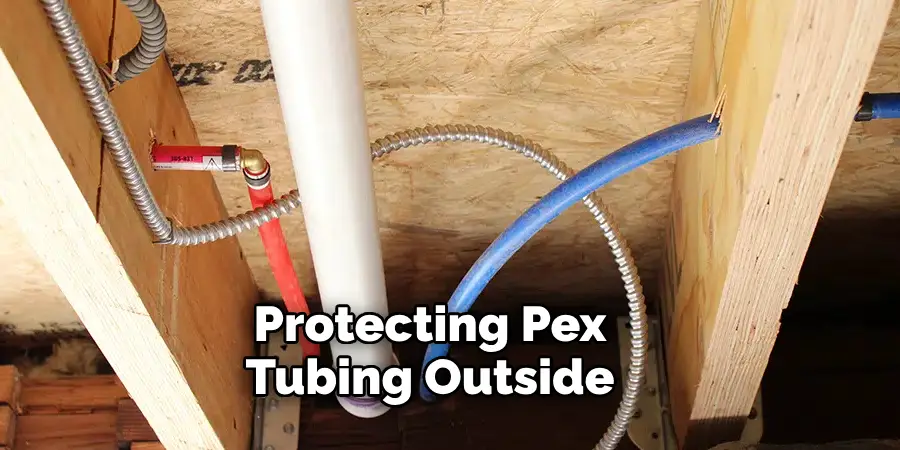
When it comes to protecting pex tubing outside, using the right materials is key. Pex tubing is usually made from cross-linked polyethylene which is known for its durability and resistance to harsh weather conditions. However, if you use low-quality insulation or protection products, they may not be able to withstand the elements and could end up deteriorating over time.
Not burying the pex tubing deep enough
When installing pex tubing underground, it should be buried at least 18 inches deep to protect it from freezing temperatures. If the ground in your area freezes during winter, not burying your pex tubing deep enough can lead to costly repairs if the pipes freeze and burst.
Not providing proper support
Pex tubing needs proper support when installed above ground to prevent sagging or damage from heavy objects. Make sure to use clamps or hangers specifically designed for pex tubing to secure it in place.
Conclusion
Protecting PEX piping outside is essential for protecting and extending its lifespan. While the process might require some creative solutions, such as laying decking slabs or creating channeled pathways, the most important takeaway is to take immediate action to help protect your prized plumbing from the outdoor environment. With regular maintenance and care, your PEX pipes will last longer, saving you time and money in repairs in the future. Now you know how to protect PEX outside – so get out there and start protecting those pipes!

